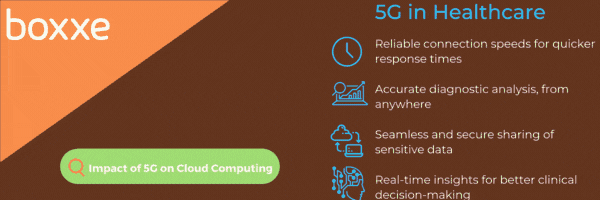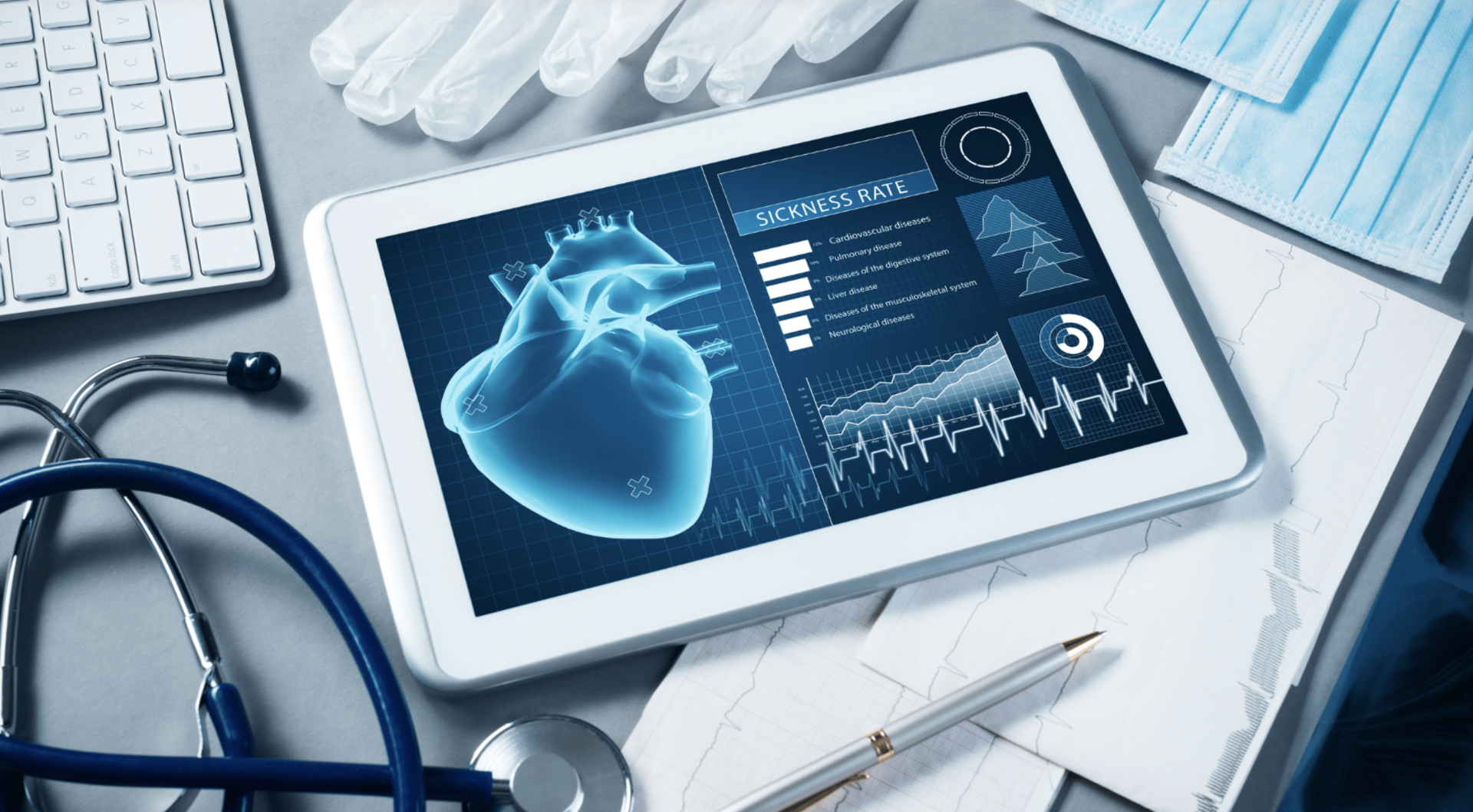

For any queries regarding our merger, please read boxxe & Total Computers – A Powerful Merger or contact our Customer Services Team on 0330 236 9429 or via email at letschat@boxxe.com.
What is the cloud?
Cloud technology has undergone aggressive growth over the past decade, at both consumer and enterprise levels. But before we get ahead to the benefits of cloud technology for healthcare, let’s take a step back and start at the source – the cloud.
Previously, applications and software could only be accessed from a single location, through a computer or a local server. But the cloud has changed all of that. In fact, the basic idea of cloud acts as a commodity - much like electricity - that provides computational power and server space. It involves hosting a remote serve network used to store, manage, process and retrieve data from any web-enabled interface, rather than relying on a local server.
Across industries, cloud computing has become the norm, as businesses and institutions leverage its long-term benefits - agility, flexibility and cost-savings. But what are the specific benefits of cloud technology for healthcare? Well...
Why do more NHS organisations want to move to the cloud?
According to BCC Research, 83% of the healthcare industry has replaced legacy data systems for cloud benefits for its business operations. And this is expected to grow to £24.7 billion in 2022, across the world.
Across the NHS, existing IT systems are not well integrated, lacking interoperability within systems that don't follow modern cybersecurity practices. As a result, patient care is affected, and healthcare professionals often become frustrated with legacy IT that's expensive to maintain.
IT challenges across healthcare can be addressed with cloud computing. As the dependency ratio grows overtime, more patients will require healthcare services with fewer resources.
Who said optimal care can't be done remotely?
6 benefits of cloud technology for healthcare
1. Flexibility for teams across Trusts
One of the benefits of cloud technology for healthcare is that it can help Trusts, CCGs (and other administrative groups) support dynamic workplace needs. For example, remote teams can benefit from accessing their clinical desktops, from anywhere.
2. A seamless, consistent workplace experience
If a patient transfers between Trusts, how do you share their medical data securely? The adoption of cloud computing offers an encrypted channel to transfer secured data from. If remote access used to be a security problem, with cloud technology, it isn't anymore. With 5G becoming more accessible, healthcare cloud computing will be a smooth, consistent experience (which means your productivity won't suffer, wherever you are).
3. Pay-as-you-go cloud approach
Unlike before, where data centres required infrastructure and maintenance costs, cloud computing has become a bit more sophisticated than that. In fact, you only pay for how much you use. In other words, your capital expense becomes a variable one - depending on your usage.
4. Extend your clinical PC, to your home
Hosted Virtual Desktop services, like Modern Desktop on Demand, are a low-cost way for staff to access clinical applications, even through mobile apps which means even if you're in a different country, your access remains. To simplify this, your desktop (along with your applications) can be virtually replicated across your home computer that allow you the same, secure access from anywhere.
5. Disaster Recovery
Service disruption can pose a challenge across healthcare, either due to accidental deletion or a cyberattack. Platforms like Microsoft Azure offer end-to-end backup and distaster recovery services that keeps critical data and down-time to an absolute minimum.
6. Data Security
Desktops hosted in a remote server translates to a more centralised control over applications and desktop access. From sensitive patient data to big data analytics, cloud computing is a step ahead when it comes to security. Even for remote teams, Windows Virtual Desktop ensures all your critical data, from electronic medical records to staff information, remain safeguarded.

Interested in asking an expert some questions about cloud computing?
Chat with Matt Fooks
Workplace Solutions Architect
Real-world benefits of cloud computing in healthcare
Using virtual appointments to improve efficiency
Case study: Rotherham NHS Trust
To accommodate 264,700 outpatient appointments, cloud computing and automation capabilities maximised efficiency across Rotherham NHS Trust’s consultation process.
For three years, Microsoft Teams had been widely used. But Rotherham Trust wanted to improve their internal communications, and extend their current consultation process to a virtual one. Working alongside Oxford Digital Health (OX.DH), the solution involved a Teams-based virtual waiting room, known as OX.waiting room (OX.wr).
To meet the Trust's specific needs, the OX.wr solution involved scheduling integration across various electronic patient record (EPR) systems and SMS notifications for clinicians and patients. This process offered a user interface to manage virtual appointments effectively across the Trust.
Microsoft Teams' improved functional capabilities enabled more accessible features than any other communication platform. From background modification during calls, and assistive technologies such as Immersive Reader (IR) that suited individual patient needs.
One of the benefits of cloud technology for healthcare is agility. With hosted virtual desktop services like Modern Desktop on Demand, mobile doctors can remotely access their clinical desktop resources from anywhere, helping to simplify the virtual appointment process (a step) further.
Benefiting from automation, the appointment process is now managed and sent to the specific electronic patient record system, without any human intervention. In six months, Rotherham Trust reduced their outpatient waiting lists by 65% as a result of better resource allocation, improving patient experiences and cost-savings across the Trust.
Case study: 5G connected Ambulance
A partnership between West Midlands 5G, BT and University Hospitals Birmingham trialed the UK’s first 5G Connected Ambulance.
Faster and reliable data transfer speeds from 5G network allowed paramedics to connect with doctors at the hospital. A trial that wouldn't be possible over 3G and 4G networks, which showcases the reliability offered from 5G cloud computing.
Hosted virtual desktops, like Modern Desktop on Demand, are one of the major benefits of cloud technology for healthcare.
Virtual desktops allow paramedics to feed high-definition imagery back to the hospital in real-time for clinical diagnosis from doctors. Facilitated by a secure 5G video-link, remote clinical decisions allow paramedics to benefit from accelerated critical response times with precise diagnosis and treatment.
Case study: NHS Highland IoT project
Across NHS Highland, Internet of Things (IoT) testbeds were being trialed across hospitals and healthcare facilities. Already operational at Raigmore Hospital in Inverness, this project is expected to drive efficiency and enhance the staff and user experience.
NHS Highland serves 320,000 people, covering 32,000km2 – equivalent to the size of Wales and Northern Ireland, combined - so IoT could pave the way for sustainable cost-savings that covers a wide geographical area. This health IoT project aims to support non-clinical applications, ranging from monitoring healthcare services’ environmental impact to supporting patient safety.
Asset-tracking is a central focus. It leverages sensors to locate equipment to streamline when and how it’s used to inform on logistical decision-making. This facilitates predictive maintenance that informs when an equipment needs repairing, instead waiting for it to become completely idle. This IoT health project would witness sustainable and cost-saving impacts across the Trust.
Coupled with IoT and Robotic Process Automation (RPA), one of the benefits of cloud technology for healthcare is how much more efficient it can make hospital estates management. Along with Automation Anywhere, boxxe’s Northampton General Hospital case study used an RPA ‘oxygen-bot’.
It would automatically trigger a purchase order for more oxygen when the hospital ward tank dropped below a certain level. This ensured that demand was always predicted and managed – all without human intervention.
Other organisations have also used cloud computing and RPA with great success too!
Northampton General Hospital developed an ‘oxygen-bot’ which automatically triggers a purchase order for more oxygen when a hospital ward tank drops below a certain level. This means demand is always predicted and managed – all without human intervention.











